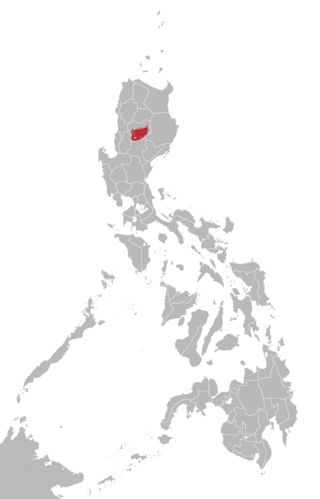Related Research Articles
Most languages of Europe belong to the Indo-European language family. Out of a total European population of 744 million as of 2018, some 94% are native speakers of an Indo-European language. Within Indo-European, the three largest phyla in Europe are Romance, Germanic, and Slavic, they have more than 200 million speakers each and together account for close to 90% of Europeans. Smaller phyla of Indo-European found in Europe include Hellenic, Baltic, Albanian, Celtic, and Armenian ; Indo-Aryan, though a large subfamily of Indo-European, has a relatively small number of speakers in Europe.

Dari, also known as Dari Persian, is the variety of the Persian language spoken in Afghanistan. Dari is the term officially recognised and promoted since 1964 by the Afghan government for the Persian language, hence it is known as Afghan Persian or Eastern Persian in many Western sources. As Professor Nile Green remarks "the impulses behind renaming of Afghan Persian as Dari were more nationalistic than linguistic" in order to create an Afghan state narrative. Apart from a few basics of vocabulary, there is little difference between formal written Persian of Afghanistan and Iran. The term "Dari" is officially used for the characteristic spoken Persian of Afghanistan, but is best restricted to formal spoken registers. Persian-speakers in Afghanistan prefer to still call their language “Farsi,” while Pashto-speakers may sometimes refer to it as "Parsi." Farsi Dari serves as the lingua franca for inter ethnic communications in Afghanistan.

Uzbek, formerly known as Turki or Western Turki, is a Turkic language spoken by Uzbeks. It is the official, and national language of Uzbekistan. Uzbek is spoken as either native or second language by 44 million people around the world (L1+L2), making it the second-most widely spoken Turkic language after Turkish. There are two major variants of Uzbek language, Northern Uzbek spoken in Uzbekistan, Kyrgyzstan, Kazakhstan, Tajikistan, Turkmenistan and China and Southern Uzbek spoken in Afghanistan and Pakistan.

Gorani also known by its main dialect; Hawrami is a Northwestern Iranian language spoken by ethnic Kurds in northeastern Iraq and eastern Iran and which with Zaza constitute the Zaza–Gorani languages. All the Gorani dialects are influenced by Kurdish lexically and morphologically. Gorani is considered a Kurdish dialect by many researchers. Some consider it a literary language for Kurds, and the speakers of Gorani call their language "Kurdish"

Zoroastrian Dari is a Persian dialect and a Northwestern Iranian ethnolect.
The Pamir languages are an areal group of the Eastern Iranian languages, spoken by numerous people in the Pamir Mountains, primarily along the Panj River and its tributaries.

Khalaj is a Turkic language spoken in Iran. Although it contains many old Turkic elements, it has become widely Persianized. In 1978, it was spoken by around 20,000 people in 50 villages southwest of Tehran, but the number of speakers has since dropped to about 19,000. Khalaj has about 150 words of uncertain origin.

Ifugao or Batad is a Malayo-Polynesian language spoken in the northern valleys of Ifugao, Philippines. It is a member of the Northern Luzon subfamily and is closely related to the Bontoc and Kankanaey languages. It is a dialect continuum, and its four main varieties—such as Tuwali—are sometimes considered separate languages.

Bontoc (Bontok) is the native language of the indigenous Bontoc people of the Mountain Province, in the northern part of the Philippines.
Sivandi is an Iranian language spoken in Fars Province, Iran, one of five listed in Ethnologue which together have 35,000 speakers.
Anyin, also known as Agni, Agny, and Anyi, is a Niger-Congo language spoken mainly in Côte d'Ivoire and Ghana. It is a Kwa language of the Central Tano branch, forming a dialect continuum with Baoulé, and is closely related to Nzema and Sehwi. Its dialects, divided into Northern and Central dialect areas, include Sannvin, Abé, Ano, Bona, Bini, and Barabo in the Northern area and Ndenye and Juablin in the Central area. In Côte d'Ivoire, there are approximately 1.45 million native speakers of Anyin, along with 10,000 second-language users; in Ghana, there are approximately 66,400 speakers.

The official language of Greece is Greek, spoken by 99% of the population. In addition, a number of non-official, minority languages and some Greek dialects are spoken as well. The most common foreign languages learned by Greeks are English, German, French and Italian.

Central Asian Arabic or Jugari Arabic is a variety of Arabic currently facing extinction and spoken predominantly by Arab communities living in portions of Central Asia.
Asuri is an Austroasiatic language spoken by the Asur people, part of the Munda branch. Asuri has many Dravidian loanwords due to contact with Kurukh.

Sámi languages, in English also rendered as Sami and Saami, are a group of Uralic languages spoken by the Sámi people in Northern Europe. There are, depending on the nature and terms of division, ten or more Sami languages. Several spellings have been used for the Sámi languages, including Sámi, Sami, Saami, Saame, Sámic, Samic and Saamic, as well as the exonyms Lappish and Lappic. The last two, along with the term Lapp, are now often considered pejorative.
Falam Chin, or Lai, is a Kuki-Chin language in Falam township, Chin State, Myanmar, and also in Mizoram, India.
Gazi is one of the Central Iranian varieties of Iran, one of five listed in Ethnologue that together have 35,000 speakers.
Natanzi is one of the Central Iranian varieties of Iran, one of five listed in Ethnologue that together have 35,000 speakers. Dialects are Natanzi, Farizandi, Yarandi/Yarani. It is closely related to Sohi.

Itneg is a South-Central Cordilleran dialect continuum found in the island of Luzon, Philippines. This language and Ilocano are spoken by the Itneg people in Abra.

The Sama language, Sinama, is the language of Sama-Bajau people of the Sulu Archipelago, Philippines; Sabah, Malaysia and parts of Indonesia. The Sama are one of the most widely dispersed peoples in Southeast Asia.
References
- ↑ Ethnologue 18 gives a figure of 7,030. However, this is a guestimate based on 35,000 speakers divided among five recognized languages.
- ↑ Nayini at Ethnologue (18th ed., 2015) (subscription required)
- ↑ Endangered Languages Project data for Zefra'i.